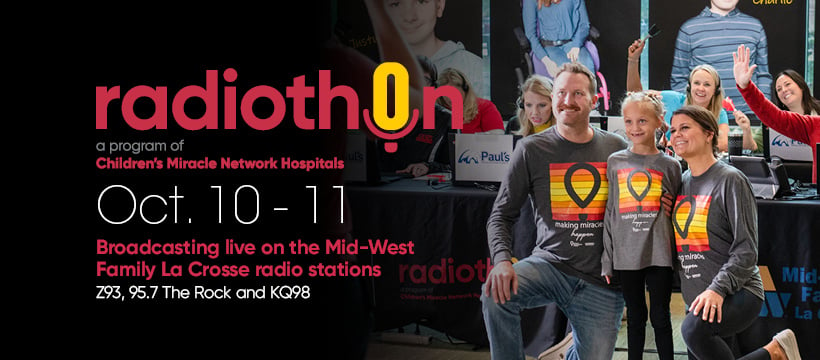What is Recruitment Marketing?
Recruitment marketing—a process of marketing your organization to potential candidates and future employees—has gained much traction in the past few years. During The Great Resignation (and all that has followed), workers sought better positions and demanded better benefits.
A strong recruitment marketing strategy is well worth the investment: LinkedIn research indicates that "A strong employer brand reduces turnover by 28% and cost per hire by 50%." Your organization can benefit from proactively marketing your benefits as an employer. Let’s discuss the process and how to develop your own recruitment marketing campaign for your next hiring season.
Recruitment marketing creates brand awareness of an employer and promotes the value of applying for positions within the organization, similarly to how a sales organization would create a positive brand identity and promote its products for sale. This is a relatively new development in HR trends, and it proactively generates interest in a company as an employer.
Consider brands such as Costco, which is well-regarded for offering good pay and friendly work hours, or Salesforce, which regularly wins awards for its company culture and other benefits.
In recruitment marketing efforts, organizations take these actions:
- Developing targeted messaging both about the employer in general and for specific jobs that are currently available or will be available in the future
- Using multiple channels to reach prospective candidates who may or may not be actively looking for a new position. For example, while traditional job boards are available for searching candidates, targeted LinkedIn campaigns may market toward currently employed professionals with specific skill sets.
- Using analytics to identify ideal candidates and factors that make individuals a likely success or long-term hire
- Craft campaigns to achieve specific goals, such as strengthening an organization's brand identity as an employer or generating interest in specific positions
How to Create a Campaign for Your Recruitment Marketing Strategy
Recruitment marketing campaigns are similar to any other campaign: planning ahead of time and breaking the project up into discrete steps can help make it more efficient and successful.
Follow these basic steps to start crafting a recruitment marketing campaign:
1. Identify the Ideal CandidateMuch like sales organizations create a buyer persona, or a hypothetical representation of an ideal customer full of demographic details, interests, and spending habits, all organizations should start by creating a candidate persona. At Mid-West Family La Crosse, we call this concept a 'candidate avatar,' which you can use to represent candidates that are the most successful in your organization. You might even create multiple candidate avatars for the various positions in your organization.
In this process, identify the benefits and perks that matter most to each candidate avatar, their skills and interests, and what channels they use to research potential job changes.
2. Create and Promote Your Employer BrandNext, it's time to start creating employer brand awareness. First, establish your employer brand. What are your core company values? What do you want to be known for—great pay? Great company culture? Make sure it's consistent and authentic, no matter what your brand says. Your efforts will quickly become hollow if your actual employee experiences don't measure up to the branding.
Then, promote your brand through ads, content, and social media posts. You can develop an 'About Us' page on your website and highlight employees each month, showcase elements of your employer brand on LinkedIn or develop brand awareness ads for digital and traditional channels.
3. Attract CandidatesNow that the foundation has been laid, you can target prospective candidates. There are two fundamental approaches you can take for general candidate outreach.
- Develop a strong job description: Include specifics, not just for the role and responsibilities, but also for the pay, the benefits, the remote options or flexibility, and other key factors. The job descriptions can be posted on your website and job boards.
- Create ads and promotional messages: Post engaging ads on social platforms, mainstream marketing channels, and other platforms. These ads can discuss your available positions and invite interested professionals to look closer.
.jpg?width=1000&height=667&name=shutterstock_579082669%20(1).jpg)
Make the application process short and communicative. You want to build rapport with candidates without stringing them along. Even if you meet prospective candidates who aren't a perfect match for the job, being courteous, transparent, and prompt will spread the word about how pleasant the experience was.
5. Close the Deal and Secure Top TalentAt this stage, roll immediately into the onboarding process. It's also important to send out thank-yous to prospective candidates, take down postings, and conclude the campaign positively. This can mitigate the risk of candidates applying long after the role is filled and ensure no one is left waiting in the pipeline.
6. Measure the Success of Your Recruitment Marketing CampaignsRecruitment campaigns create a lot of essential data you can use in subsequent campaigns. Identify the platforms that generated the most promising candidates, which ads worked the best, and what messaging aligned with top talent. Then, you can refine your recruitment marketing strategy over time.
Treat Your Recruitment Marketing Campaigns Like Your Other Marketing Campaigns—Work with an Expert Team
Recruitment campaigns are just as complex and multi-faceted as product campaigns. At Mid-West Family La Crosse, we're here to help you during each stage of the process with marketing support, access to multi-media channels, and advice for growing businesses. Contact us today to get started!





.jpg)
